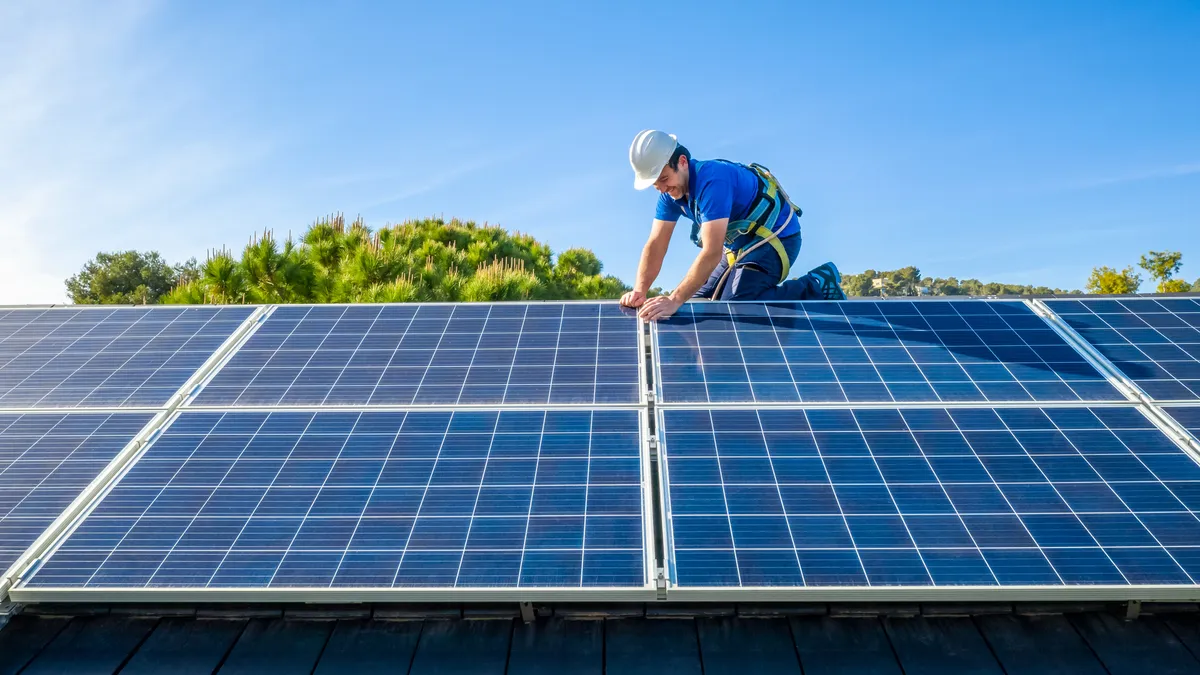Dive Brief:
-
The Midcontinent Independent System Operator shouldn’t be allowed to wait until 2030 before letting aggregated distributed energy resources participate in its power markets, according to state utility regulators.
-
MISO failed to look at the benefits of allowing groups of DERs to enter its markets, such as grid reliability and lower prices, nor did it consider the harms of delaying their market integration, the Organization of MISO States, or OMS, said in comments filed Monday with the Federal Energy Regulatory Commission.
-
The Solar Energy Industries Association and Advanced Energy Economy also support an earlier implementation date, but said MISO’s plan contained other elements that would prevent aggregated DERs from fully participating in the grid operator’s markets.
Dive Insight:
In a landmark decision, FERC in September 2020 ordered regional transmission organizations and independent system operators to remove barriers keeping DER aggregations from participating in wholesale markets. The aggregations could include resources like rooftop solar, energy storage and electric vehicle chargers.
FERC is now reviewing grid operators’ plans to meet the requirements the commission laid out in its Order 2222, such as PJM Interconnection’s proposal, which has a 2026 start date.
After conducting a stakeholder process, MISO in mid-April filed its plan at FERC, saying before letting groups of DERs into its markets it needed to finish a major market software overhaul that is set to be in place by 2025. Then, MISO wants to work on its Multiple Configuration Resources, or MCR, initiative, which the grid operator said would help it manage its growing fleet of wind and solar resources.
The benefits of DER aggregations are “unknown and relatively limited by the existing retail regulatory construct in many of the states in the MISO region,” according to MISO, which operates the grid and power markets from Louisiana to Manitoba.
However, state utility regulators contend MISO can work on its initiatives at the same time as it moves ahead with aggregated DERs.
“Both MCR and Order 2222 have significant reliability and economic benefits, and neither should be prioritized over the other – both are needed, especially considering the recent shortfalls shown in the April 2022 Planning Resource Auction and the increased penetration of renewables coming online and entering the queue,” the OMS said.
MISO and its members are unlikely to prioritize Order 2222 implementation unless FERC directs them to, according to the OMS.
Also, considering the advancements in DER technology, MISO’s proposed market participation model will likely be outdated by the time it takes effect, the OMS said.
SEIA and AEE echoed the OMS’s suggestion that FERC order MISO to consider a phased-in approach to DER aggregation, according to joint comments filed by the clean energy trade groups.
“By choosing to implement other initiatives over compliance with Order No. 2222, MISO is choosing to keep barriers to participation of DER aggregations in place nearly a decade after the commission first sought to remove them,” the groups said.
They also objected to MISO’s proposal to limit DER aggregations to a single pricing node on the grid, which the groups said would prevent many possible resident and commercial DERs from participating in wholesale power markets. It is unlikely, for example, a group of smart home thermostats across a single node would reach MISO’s proposed 100-kW minimum size for an aggregation, the groups said.
Meanwhile, MISO transmission owners, including Ameren Services, Duke Energy Indiana and Northern States Power, supported the proposed 2030 start date, saying it would allow the grid operator to complete initiatives that are expected to bring “immediate and quantifiable reliability and economic benefits.”
It will also give time for communication technology to evolve to coordinate DER aggregations with the distribution system, the transmission owners said.
The transmission owners said they generally support MISO’s DER aggregation “roadmap,” but that some details need to be fleshed out. Some of those concerns include DER aggregation eligibility reviews, metering and telemetry requirements, and transmission system reliability reviews, according to the filing.















